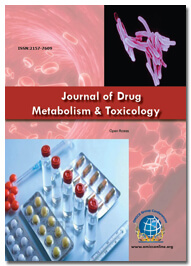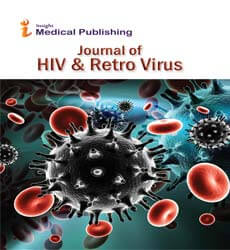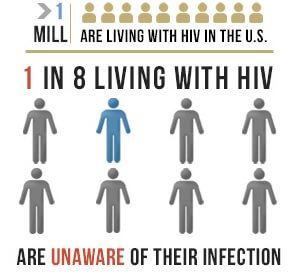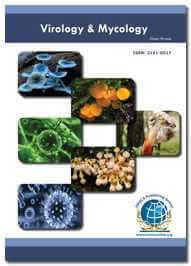Theme: Novel therapy and innovations for treatment of retroviruses
Retroviruses 2017
After the success of 2nd International Conference on Retroviruses and Novel Drugs, conference series LLC welcomes you “3rd International Conference on Retroviruses and Novel Drugs”to be held from July 27-28, 2017 vancouver, Canada. The theme of this year conference is “Novel therapy and innovations for treatment of retroviruses” which brings together renowned virology experts from the international scientific community to provide a premier inter-multi-trans-disciplinary to exchange their latest results related to retroviral research, infections, rational drug designs and novel therapies. The scientific program paves a way to gather visionaries through the research talks, plenary lectures, symposia, workshops, invited sessions and oral and poster sessions of unsolicited contributions. The researchers whose research interest meets the topics like retrovirus-host interactions, including the anti-virus immune response and the genetics of resistance to retroviral infection and to virally induced tumors.
The strategy was developed to guide the expansion of the global HIV epidemic in the past four years. New HIV infections and HIV-related deaths are decreasing at quicker rates than ever before. Treatment awareness programs have expanded rapidly, with unprecedented growth in the numbers of people receiving life-saving antiretroviral (ARV) drugs and other care. a unique window and opportunities to present and evidence the latest updates with a holistic approach to different areas of interest. New policies and guidance on HIV prevention, diagnosis and treatment, based on the latest evidence, have been issued to improve the quality of services, enhance the efficiency of programs, and optimize HIV and broader health outcomes.
The International and national agencies working in the AIDS research are The Joint United Nations Program on HIV/AIDS (UNAIDS), Australian AID (AusAID), British AID (DFID), US Government Assistance (USG), German AID (GTZ), Canadian Aboriginal AIDS Network (CAAN) International Labour Organization (ILO), United Nations Development Programme (UNDP), UNFPA, United Nations Children’s Fund (UNICEF), World Bank (WB), World Health Organization (WHO), IAVI and other key private players include Canadian AIDS Society (CAS), Canadian Association for HIV Research (CAHR), Canadian HIV/AIDS Legal Network, Canadian Public Health Association (CPHA), Canadian Treatment Action Council (CTAC), Canadian Working Group on HIV and Rehabilitation (CWGHR), CATIE, CIHR Canadian HIV Trials Network (CTN), Interagency Coalition on AIDS and Development (ICAD).
Target Audience
-
Scientists
-
Researchers
-
Doctors
-
Immunologists
-
Pathologist
-
Medical Sciences
-
Students
-
HIV/ AIDS Associations and Societies
-
Business Entrepreneurs
-
Training Institutions
-
Manufacture Medical Device Companies
Track1: Retrovirus diseases
A retrovirus is a single-stranded positive-sense RNA virus with a DNA intermediate and, as an obligate parasite, targets a host cell. Retroviruses have integrated their own genome into the germ line, their genome is passed retroviruses have integrated their own genome into the germ line, their genome is passed on to a on to an exogenous and endogenous retrovirus. Also immunology-related pathologies, such as autoimmune diseases like multiple sclerosis.
Conferences Related to Infection and Immune System
35th Annual Infectious Diseases Conference, February 3-4, 2017 Sacramento, CA, United States; 24th Conference on Retroviruses and Opportunistic Infections, February 13-16, 2017 Seattle, United States; Australasian Society for Infectious Diseases Annual Scientific Meeting, March 29 - April 1, 2017 Leura, Australia; 27th European Congress of Clinical Microbiology and Infectious Diseases, April 22-25, 2017 Vienna, Austria; Sixth International Conference on Infectious Disease Dynamics 29 November-1 December, 2017 Sitges (near Barcelona), Spain; Annual Congress on Rare Diseases and Orphan Drugs, Oct 26-27, 2016 Chicago, Illinois, USA; 2nd International conference on Flu, October 31- November 02, 2016 San Francisco, California, USA; International congress on Infectious Diseases, May11-12, 2017 Barcelona, Spain; 5th International Congress on Bacteriology and Infectious Diseases, May 25-26, 2017 Chicago, Illinois, USA; International Conference on Retroviruses and Novel Drugs, July 27-28, 2017 Vancouver, Canada.
Track2: Retroviral treatment
Antiretroviral drugs are medications for the treatment of infection by retroviruses, primarily HIV. Different classes of antiretroviral drugs act on different stages of the HIV life cycle. Combination of several (typically three or four) antiretroviral drugs is known as highly active anti-retroviral therapy.
Conferences Related to Infection and Immune System
35th Annual Infectious Diseases Conference, February 3-4, 2017 Sacramento, CA, United States; 24th Conference on Retroviruses and Opportunistic Infections, February 13-16, 2017 Seattle, United States; Australasian Society for Infectious Diseases Annual Scientific Meeting, March 29 - April 1, 2017 Leura, Australia; 27th European Congress of Clinical Microbiology and Infectious Diseases, April 22-25, 2017 Vienna, Austria; Sixth International Conference on Infectious Disease Dynamics 29 November-1 December, 2017 Sitges (near Barcelona), Spain; Annual Congress on Rare Diseases and Orphan Drugs, Oct 26-27, 2016 Chicago, Illinois, USA; 2nd International conference on Flu, October 31- November 02, 2016 San Francisco, California, USA; International congress on Infectious Diseases, May11-12, 2017 Barcelona, Spain; 5th International Congress on Bacteriology and Infectious Diseases, May 25-26, 2017 Chicago, Illinois, USA; International Conference on Retroviruses and Novel Drugs, July 27-28, 2017 Vancouver, Canada.
Track3: Recent advances in retroviral therapy
The care of the human immunodeficiency virus (HIV) infected patient has changed dramatically in the last few years. Potent new antiretroviral drugs combined with updated treatment strategies have now achieved efficient inhibition of HIV replication in most patients. It is clear that the eradication of HIV is not achievable with existing anti-HIV drugs and in spite of the major advances there remain many challenges in the clinical management of HIV-infected individuals.
Conferences Related to Infection and Immune System
35th Annual Infectious Diseases Conference, February 3-4, 2017 Sacramento, CA, United States; 24th Conference on Retroviruses and Opportunistic Infections, February 13-16, 2017 Seattle, United States; Australasian Society for Infectious Diseases Annual Scientific Meeting, March 29 - April 1, 2017 Leura, Australia; 27th European Congress of Clinical Microbiology and Infectious Diseases, April 22-25, 2017 Vienna, Austria; Sixth International Conference on Infectious Disease Dynamics 29 November-1 December, 2017 Sitges (near Barcelona), Spain; Annual Congress on Rare Diseases and Orphan Drugs, Oct 26-27, 2016 Chicago, Illinois, USA; 2nd International conference on Flu, October 31- November 02, 2016 San Francisco, California, USA; International congress on Infectious Diseases, May11-12, 2017 Barcelona, Spain; 5th International Congress on Bacteriology and Infectious Diseases, May 25-26, 2017 Chicago, Illinois, USA; International Conference on Retroviruses and Novel Drugs, July 27-28, 2017 Vancouver, Canada.
Track4: Retroviral delivery system
Retroviruses are an efficient means to deliver single DNA expression constructs to a wide range of mammalian cell types. They are by far the easiest and fastest means to deliver genes stably to mammalian cells. They have an additional advantage in that systems developed application to deliver large libraries of genes or peptides to target cells.
Conferences Related to Infection and Immune System
35th Annual Infectious Diseases Conference, February 3-4, 2017 Sacramento, CA, United States; 24th Conference on Retroviruses and Opportunistic Infections, February 13-16, 2017 Seattle, United States; Australasian Society for Infectious Diseases Annual Scientific Meeting, March 29 - April 1, 2017 Leura, Australia; 27th European Congress of Clinical Microbiology and Infectious Diseases, April 22-25, 2017 Vienna, Austria; Sixth International Conference on Infectious Disease Dynamics 29 November-1 December, 2017 Sitges (near Barcelona), Spain; Annual Congress on Rare Diseases and Orphan Drugs, Oct 26-27, 2016 Chicago, Illinois, USA; 2nd International conference on Flu, October 31- November 02, 2016 San Francisco, California, USA; International congress on Infectious Diseases, May11-12, 2017 Barcelona, Spain; 5th International Congress on Bacteriology and Infectious Diseases, May 25-26, 2017 Chicago, Illinois, USA; International Conference on Retroviruses and Novel Drugs, July 27-28, 2017 Vancouver, Canada.
Track5: Retroviral syndrome
Acute HIV infection and primary HIV infection both describe the period immediately after infection when the patient is viremic and has detectable HIV RNA without diagnostic HIV antibodies. Early infection refers to both acute and recent infection, after which infection is defined as chronic.
Conferences Related to Infection and Immune System
35th Annual Infectious Diseases Conference, February 3-4, 2017 Sacramento, CA, United States; 24th Conference on Retroviruses and Opportunistic Infections, February 13-16, 2017 Seattle, United States; Australasian Society for Infectious Diseases Annual Scientific Meeting, March 29 - April 1, 2017 Leura, Australia; 27th European Congress of Clinical Microbiology and Infectious Diseases, April 22-25, 2017 Vienna, Austria; Sixth International Conference on Infectious Disease Dynamics 29 November-1 December, 2017 Sitges (near Barcelona), Spain; Annual Congress on Rare Diseases and Orphan Drugs, Oct 26-27, 2016 Chicago, Illinois, USA; 2nd International conference on Flu, October 31- November 02, 2016 San Francisco, California, USA; International congress on Infectious Diseases, May11-12, 2017 Barcelona, Spain; 5th International Congress on Bacteriology and Infectious Diseases, May 25-26, 2017 Chicago, Illinois, USA; International Conference on Retroviruses and Novel Drugs, July 27-28, 2017 Vancouver, Canada.
Track6: Human Endogenous and Exogenous Retroviruses
Endogenous viral elements in the genome that closely resemble and can be derived from retroviruses and exogenous retroviruses such as human immunodeficiency virus (HIV) and human T cell leukaemia virus.
Conferences Related to Infection and Immune System
35th Annual Infectious Diseases Conference, February 3-4, 2017 Sacramento, CA, United States; 24th Conference on Retroviruses and Opportunistic Infections, February 13-16, 2017 Seattle, United States; Australasian Society for Infectious Diseases Annual Scientific Meeting, March 29 - April 1, 2017 Leura, Australia; 27th European Congress of Clinical Microbiology and Infectious Diseases, April 22-25, 2017 Vienna, Austria; Sixth International Conference on Infectious Disease Dynamics 29 November-1 December, 2017 Sitges (near Barcelona), Spain; Annual Congress on Rare Diseases and Orphan Drugs, Oct 26-27, 2016 Chicago, Illinois, USA; 2nd International conference on Flu, October 31- November 02, 2016 San Francisco, California, USA; International congress on Infectious Diseases, May11-12, 2017 Barcelona, Spain; 5th International Congress on Bacteriology and Infectious Diseases, May 25-26, 2017 Chicago, Illinois, USA; International Conference on Retroviruses and Novel Drugs, July 27-28, 2017 Vancouver, Canada.
Track7: Retroviruses and osteoporosis
Osteoporosis is a disease that causes bones to become weak and easy to break. Osteoporosis increases the risk of fractures of the hip, spine, and wrist. Factors that may increase the risk of osteoporosis in people living with HIV include HIV infection itself and some HIV medicines.
Conferences Related to Infection and Immune System
35th Annual Infectious Diseases Conference, February 3-4, 2017 Sacramento, CA, United States; 24th Conference on Retroviruses and Opportunistic Infections, February 13-16, 2017 Seattle, United States; Australasian Society for Infectious Diseases Annual Scientific Meeting, March 29 - April 1, 2017 Leura, Australia; 27th European Congress of Clinical Microbiology and Infectious Diseases, April 22-25, 2017 Vienna, Austria; Sixth International Conference on Infectious Disease Dynamics 29 November-1 December, 2017 Sitges (near Barcelona), Spain; Annual Congress on Rare Diseases and Orphan Drugs, Oct 26-27, 2016 Chicago, Illinois, USA; 2nd International conference on Flu, October 31- November 02, 2016 San Francisco, California, USA; International congress on Infectious Diseases, May11-12, 2017 Barcelona, Spain; 5th International Congress on Bacteriology and Infectious Diseases, May 25-26, 2017 Chicago, Illinois, USA; International Conference on Retroviruses and Novel Drugs, July 27-28, 2017 Vancouver, Canada.
Track8: Antiretroviral therapy drugs
HIV/AIDS normally includes the use of multiple antiretroviral drugs in an attempt to control HIV infection. There are several classes of antiretroviral agents that act on different stages of the HIV life-cycle. The use of multiple drugs that act on different viral targets is known as highly active antiretroviral therapy.
Conferences Related to Infection and Immune System
35th Annual Infectious Diseases Conference, February 3-4, 2017 Sacramento, CA, United States; 24th Conference on Retroviruses and Opportunistic Infections, February 13-16, 2017 Seattle, United States; Australasian Society for Infectious Diseases Annual Scientific Meeting, March 29 - April 1, 2017 Leura, Australia; 27th European Congress of Clinical Microbiology and Infectious Diseases, April 22-25, 2017 Vienna, Austria; Sixth International Conference on Infectious Disease Dynamics 29 November-1 December, 2017 Sitges (near Barcelona), Spain; Annual Congress on Rare Diseases and Orphan Drugs, Oct 26-27, 2016 Chicago, Illinois, USA; 2nd International conference on Flu, October 31- November 02, 2016 San Francisco, California, USA; International congress on Infectious Diseases, May11-12, 2017 Barcelona, Spain; 5th International Congress on Bacteriology and Infectious Diseases, May 25-26, 2017 Chicago, Illinois, USA; International Conference on Retroviruses and Novel Drugs, July 27-28, 2017 Vancouver, Canada.
Track9: Retroviral gene transduction
A retrovirus vector is an infectious virus used to introduce a nonviral gene into mitotic cells in vivo or in vitro. Transduction does not require physical contact between the cell donating the DNA and the cell receiving the DNA and it is DNase resistant. Transduction is a common tool used by molecular biologists to stably introduce a foreign gene into a host cell's genome.
Conferences Related to Infection and Immune System
35th Annual Infectious Diseases Conference, February 3-4, 2017 Sacramento, CA, United States; 24th Conference on Retroviruses and Opportunistic Infections, February 13-16, 2017 Seattle, United States; Australasian Society for Infectious Diseases Annual Scientific Meeting, March 29 - April 1, 2017 Leura, Australia; 27th European Congress of Clinical Microbiology and Infectious Diseases, April 22-25, 2017 Vienna, Austria; Sixth International Conference on Infectious Disease Dynamics 29 November-1 December, 2017 Sitges (near Barcelona), Spain; Annual Congress on Rare Diseases and Orphan Drugs, Oct 26-27, 2016 Chicago, Illinois, USA; 2nd International conference on Flu, October 31- November 02, 2016 San Francisco, California, USA; International congress on Infectious Diseases, May11-12, 2017 Barcelona, Spain; 5th International Congress on Bacteriology and Infectious Diseases, May 25-26, 2017 Chicago, Illinois, USA; International Conference on Retroviruses and Novel Drugs, July 27-28, 2017 Vancouver, Canada.
Track10: Retrovirus and cancer
HIV is one of the best-known retroviruses. Oncogenic retroviruses are cancer-causing viruses. Numerous oncoretroviruses are associated with animal diseases. In humans, two retroviruses, called HTLV and XMRV, have been associated with a type of leukemia and with prostate cancer.
Conferences Related to Infection and Immune System
35th Annual Infectious Diseases Conference, February 3-4, 2017 Sacramento, CA, United States; 24th Conference on Retroviruses and Opportunistic Infections, February 13-16, 2017 Seattle, United States; Australasian Society for Infectious Diseases Annual Scientific Meeting, March 29 - April 1, 2017 Leura, Australia; 27th European Congress of Clinical Microbiology and Infectious Diseases, April 22-25, 2017 Vienna, Austria; Sixth International Conference on Infectious Disease Dynamics 29 November-1 December, 2017 Sitges (near Barcelona), Spain; Annual Congress on Rare Diseases and Orphan Drugs, Oct 26-27, 2016 Chicago, Illinois, USA; 2nd International conference on Flu, October 31- November 02, 2016 San Francisco, California, USA; International congress on Infectious Diseases, May11-12, 2017 Barcelona, Spain; 5th International Congress on Bacteriology and Infectious Diseases, May 25-26, 2017 Chicago, Illinois, USA; International Conference on Retroviruses and Novel Drugs, July 27-28, 2017 Vancouver, Canada.
Track11: Reteroviral Co-Infections
Some infectious diseases can be passed from person to person. Signs and symptoms vary depending on the organism causing the infection. Human Papilloma Virus is the most common sexually transmitted diseases. Some types of these viruses can cause genital warts and cancers. Genital warts usually appear as a small bump or group of bumps in the genital area. However, if the infection is High risk, then there will be more chances of occurrence of cervical cancer. Vaccination is recommended for the patients with compromised immune system.
Conferences Related to Infection and Immune System
35th Annual Infectious Diseases Conference, February 3-4, 2017 Sacramento, CA, United States; 24th Conference on Retroviruses and Opportunistic Infections, February 13-16, 2017 Seattle, United States; Australasian Society for Infectious Diseases Annual Scientific Meeting, March 29 - April 1, 2017 Leura, Australia; 27th European Congress of Clinical Microbiology and Infectious Diseases, April 22-25, 2017 Vienna, Austria; Sixth International Conference on Infectious Disease Dynamics 29 November-1 December, 2017 Sitges (near Barcelona), Spain; Annual Congress on Rare Diseases and Orphan Drugs, Oct 26-27, 2016 Chicago, Illinois, USA; 2nd International conference on Flu, October 31- November 02, 2016 San Francisco, California, USA; International congress on Infectious Diseases, May11-12, 2017 Barcelona, Spain; 5th International Congress on Bacteriology and Infectious Diseases, May 25-26, 2017 Chicago, Illinois, USA; International Conference on Retroviruses and Novel Drugs, July 27-28, 2017 Vancouver, Canada.
Track12: Theraputic approches of novel drugs
Antiretroviral therapy has been exceeding by adapting the various novel drug delivery methods, which pays pathway for many scientists to prove the efficiency of their techniques. The formulation design and optimization of analytical techniques requires multidisciplinary research for ultimate marketing of these NDDS products especially for ARV drugs, because of the intricacy of the viral infections diseases. Certainly, the present techniques with new therapeutic agents and scheduled regimens can provide notice able improvement in the future of HIV virus infected people’s living.
Conferences Related to Infection and Immune System
35th Annual Infectious Diseases Conference, February 3-4, 2017 Sacramento, CA, United States; 24th Conference on Retroviruses and Opportunistic Infections, February 13-16, 2017 Seattle, United States; Australasian Society for Infectious Diseases Annual Scientific Meeting, March 29 - April 1, 2017 Leura, Australia; 27th European Congress of Clinical Microbiology and Infectious Diseases, April 22-25, 2017 Vienna, Austria; Sixth International Conference on Infectious Disease Dynamics 29 November-1 December, 2017 Sitges (near Barcelona), Spain; Annual Congress on Rare Diseases and Orphan Drugs, Oct 26-27, 2016 Chicago, Illinois, USA; 2nd International conference on Flu, October 31- November 02, 2016 San Francisco, California, USA; International congress on Infectious Diseases, May11-12, 2017 Barcelona, Spain; 5th International Congress on Bacteriology and Infectious Diseases, May 25-26, 2017 Chicago, Illinois, USA; International Conference on Retroviruses and Novel Drugs, July 27-28, 2017 Vancouver, Canada.
THEME: Novel therapy and innovations for treatment of retroviruses
Scope and importance of retrovirus
Retrovirology is an open access, online journal that publishes stringently peer-reviewed, high-impact articles on basic retrovirus research. Retroviruses are pleiotropically found in animals. Well-described examples include avian, murine and primate retroviruses. Two human retroviruses are especially important pathogens. These are the human immunodeficiency virus, HIV, and the human T-cell leukemia virus, HTLV. HIV causes AIDS while HTLV-I is the etiological agent for adult T-cell leukemia. Retrovirology intends to cover these areas of human and animal retrovirus research. More than 1.2 million people in the US are living with HIV, and 1 in 8 of them don’t know it.Over the last decade, the annual number of new HIV diagnoses declined 19%.Gay and bisexual men, particularly young African American gay and bisexual men, are most affected. African Americans continue to experience the greatest burden of HIV compared to other races and ethnicities. From 2005 to 2014: Diagnoses among all women declined 40%, and among African American women, diagnoses declined 42%. Among all heterosexuals, diagnoses declined 35%, and among people who inject drugs, diagnoses declined 63%.
Heterosexuals and people who inject drugs also continue to be affected by HIV.
In 2014:
-
Heterosexual contact accounted for 24% (10,527) of estimated HIV diagnoses.
-
Women accounted for 19% (8,328) of estimated HIV diagnoses. Diagnoses among women are primarily attributed to heterosexual contact (87%, or 7,242) or injection drug use (13%, or 1,045).
-
An estimated 6% (2,635) of HIV diagnoses were attributed to injection drug use.
Why Canada?
More than two decades, the HIV/AIDS pandemic remains an enormous challenge in Canada and around the world. The human toll in terms of premature death and the untold anguish and suffering of people affected by the disease and those who care for them is immeasurable. Canada’s response to HIV/AIDS has slowed the progression of the epidemic within our own borders. This is the result of the tireless efforts of people living with HIV/AIDS, community workers, volunteers, health care workers and researchers at the forefront of the response. At the same time, governments at all levels, non-governmental organizations and the private sector have contributed to advances in prevention, care, treatment and support. As a result of these combined efforts, Canada has made important strides in moving beyond the medical aspects of the epidemic to the point where we can begin to address the social and economic challenges and inequities that leave people vulnerable to HIV/AIDS.
The Federal Initiative to Address HIV/AIDS in Canada builds on previous government initiatives both at home and abroad. It will contribute to a comprehensive and integrated Canadian response – one that acknowledges that addressing the pandemic and its root causes is the only way to bring it to an end. Over the past year, those involved in the Canadian response have been working together to define the optimum response to HIV/AIDS in Canada. The report, Leading Together: An HIV/AIDS Action Plan for All Canada will be available shortly and will set out an integrated and coherent way forward.
Canada can point to a number of important successes during the past two decades. Research advances have given us a better understanding of HIV/AIDS transmission, disease progression and treatment options. Mother-to-child transmission of HIV has been nearly eliminated in Canada. New HIV infections among the general population have been minimized, and the blood system has been made as safe as possible from contamination by HIV and other infectious diseases. Steps have also been taken to increase public awareness of HIV/AIDS and tackle stigma and discrimination around the disease. Globally, Canada has responded to the HIV/AIDS pandemic with strong strategic leadership, a generous financial commitment and a comprehensive, coordinated approach to HIV/AIDS programming.
At the same time, Canada’s HIV/AIDS response still faces challenges. Although the emergence of highly active antiretroviral treatments in the late 1990s has prolonged and improved the quality of life of many HIV-infected Canadians, difficulties in accessing treatment, treatment failures, toxic side effects and drug resistance have become more and more common, presenting barriers to getting ahead of the epidemic. HIV/AIDS is still a fatal disease. There are no vaccines to prevent new infections. There is no cure. In 2003 alone, the Joint United Nations Programme on HIV/AIDS (UNAIDS) estimates that 3 million people died due to AIDS, while 5 million were newly infected with HIV.
Health and Development Challenges:
According to the World Health Organization (WHO) , there were approximately 36.9 million people worldwide living with HIV/AIDS at the end of 2014. Of these, 2.6 million were children (<15 years old). And estimated 2.0 million individuals worldwide became newly infected with HIV in 2014. This includes over 220,000 children. And around 22 million do not have access to HIV treatment, including 1.8 million children. Most of these children live in sub-Saharan Africa and were infected by their HIV-positive mothers during pregnancy, childbirth or breastfeeding. An estimated 34 million people have died from AIDS-related causes so far, including 1.2 million in 2014. A UNAIDS report shows that of the 36.9 million people living with HIV globally, 17.1 do not know they have the virus and need to be reached with HIV testing services, The vast majority of people living with HIV are in low- and middle-income countries. According to WHO, Even today, despite advances in our scientific understanding of HIV and its prevention and treatment as well as years of significant effort by the global health community and leading government and civil society organizations, most people living with HIV or at risk for HIV do not have access to prevention, care, and treatment, and there is still no cure. However, effective treatment with antiretroviral drugs can control the virus so that people with HIV can enjoy healthy lives and reduce the risk of transmitting the virus to others.
The HIV epidemic not only affects the health of individuals, it impacts households, communities, and the development and economic growth of nations. Many of the countries hardest hit by HIV also suffer from other infectious diseases, food insecurity, and other serious problems.
-
Despite these challenges, there have been successes and promising signs. New global efforts have been mounted to address the epidemic, particularly in the last decade. Prevention has helped to reduce HIV prevalence rates in a small but growing number of countries and new HIV infections are believed to be on the decline. In addition, the number of people with HIV receiving treatment in resource-poor countries has dramatically increased in the past decade. According to UNAIDS, in June 2015, 15.8 million people living with HIV were accessing antiretroviral therapy (ART) globally, up from 13.6 million in June 2014.
-
Progress has been made in preventing mother-to-child transmission of HIV and keeping mothers alive. According to UNAIDS, in 2014, 73% of the estimated 1.5 million pregnant women living with HIV globally were accessing antiretroviral therapy to avoid transmission of HIV to their children; new HIV infections among children were reduced by 58% from 2000 to 2014.
HIV in the United States
In 2014, an estimated 44,073 people were diagnosed with HIV infection in the United States. The number of new HIV diagnoses fell 19% from 2005 to 2014. Because HIV testing has remained stable or increased in recent years, this decrease in diagnoses suggests a true decline in new infections. The decrease may be due to targeted HIV prevention efforts. However, progress has been uneven, and diagnoses have increased among a few groups.
Among all gay and bisexual men, trends have varied by race and over time. From 2005 to 2014:
-
Among white gay and bisexual men, diagnoses dropped steadily, declining 18% overall.
-
Among Hispanic/Latino gay and bisexual men, diagnoses rose by 24%.
-
Although diagnoses among African American gay and bisexual men increased 22%, they have levelled off in the past 5 years, increasing less than 1% since 2010.
-
Young African American gay and bisexual men (aged 13 to 24) experienced an 87% increase in diagnoses. But since 2010, diagnoses have declined 2%.
- 1980s estimated 1,210,835 people have been diagnosed with AIDS.
- 2012: 1,218,400 adult, 156,300 (13%) had not been diagnosed.
- In 2013, there were an estimated 12,963 deaths.
- 2014: 20,896 people were diagnosed with AIDS.
- 6,955 deaths were attributed directly to HIV.

The United States of America (USA) currently has around 1.2 million people living with HIV, with one in seven people unaware that they have HIV. The size of the epidemic is relatively small compared to the total population, however it is heavily concentrated among several key affected populations and geographically in the southern states – where 49% of all HIV new infections occur. Since the beginning of the HIV and AIDS epidemic, 659,000 people have died of AIDS-related illnesses in the USA. Although the USA is the greatest national funder of the HIV epidemic globally, it is still facing a major ongoing HIV epidemic itself, with around 50,000 new infections per year. Stigma and discrimination continue to hamper people's access to HIV prevention, testing and treatment services, fuelling the cycle of new infections.The USA lacked a comprehensive plan on HIV until 2010. The latest strategy, released in 2015, is structured around four core aims: reducing new HIV infections; increasing access to care and improving health outcomes for people living with HIV; reducing HIV-related disparities and health inequities and achieving a coordinated national
FUNDING
Several donor governments recently increased their contributions to the Global Fund and now prefer to spend through multilateral rather than bilateral channels. In 2014, six donors provided the majority of their HIV funding through the Global Fund (Canada, the European Commission, France, Germany, Italy and Japan). Multilateral funding increased by roughly $250 million on 2013. The CDC provides funding and support for states to target high-risk groups through its ‘High-Impact Prevention’ approach. This approach uses a mix of interventions that are scientifically proven, cost-effective, measurable and targeted toward populations most at-risk in specific geographical areas.
response to the epidemic.

NUMBER OF LIFES SAVED THROUGH FUNDING

MAP OF CANADA, USA
- 1.2 MILLION PEOPLE LIVING WITH HIV 2013
- 0.4%-0.9% ADULT HIV PREVELANCE 2012
- 47,352 NEW HIV INFECTIONS 2013
- 13,700 AIDS RELATED DEATHS 2012
- 37% ANTI RETROVIRAL TREATMENT COVERAGE 2011
Canadian Universities
- Alberta Universities
- British Columbia Universities:
- Simon Fraser University- Vancouver
- Universities in British Colombia
- Capilano University
- Okanagan University College
- University of British Colombia
- Manitoba Universities
- Newfoundland Universities
- Nova Scotia Universities
- Ontario Universities
- Prince Edward Island Universities
- Quebec Universities
- Saskatchewan Universities
ASSOCIATIONS:
- United Nations Development Programme (UNDP)
- UNFPA, United Nations Children’s Fund (UNICEF)
- World Bank (WB)
- World Health Organization (WHO)
- Canadian AIDS Society (CAS)
- Canadian Association for HIV Research (CAHR)
- Canadian HIV/AIDS Legal Network
- Canadian Public Health Association (CPHA)
- Canadian Treatment Action Council (CTAC)
- Canadian Working Group on HIV and Rehabilitation (CWGHR) CATIE
- CIHR Canadian HIV Trials Network (CTN)
- Interagency Coalition on AIDS and Development (ICAD)
- Canadian Aboriginal AIDS Network (CAAN)
Conference Highlights
- Retrovirus diseases
- Retroviral treatment
- Recent advances in retroviral therapy
- Retroviral delivery system
- Retroviral syndrome
- Human Endogenous and Exogenous Retroviruses
- Retroviruses and osteoporosis
- Antiretroviral therapy drugs
- Retroviral gene transduction
- Retrovirus and cancer
- Reteroviral Co-Infections
- Theraputic approches of novel drugs
To share your views and research, please click here to register for the Conference.
To Collaborate Scientific Professionals around the World
| Conference Date | July 27-28, 2017 | ||
| Sponsors & Exhibitors |
|
||
| Speaker Opportunity Closed | Day 1 | Day 2 | |
| Poster Opportunity Closed | Click Here to View | ||
Useful Links
Special Issues
All accepted abstracts will be published in respective Our International Journals.
Abstracts will be provided with Digital Object Identifier by


































